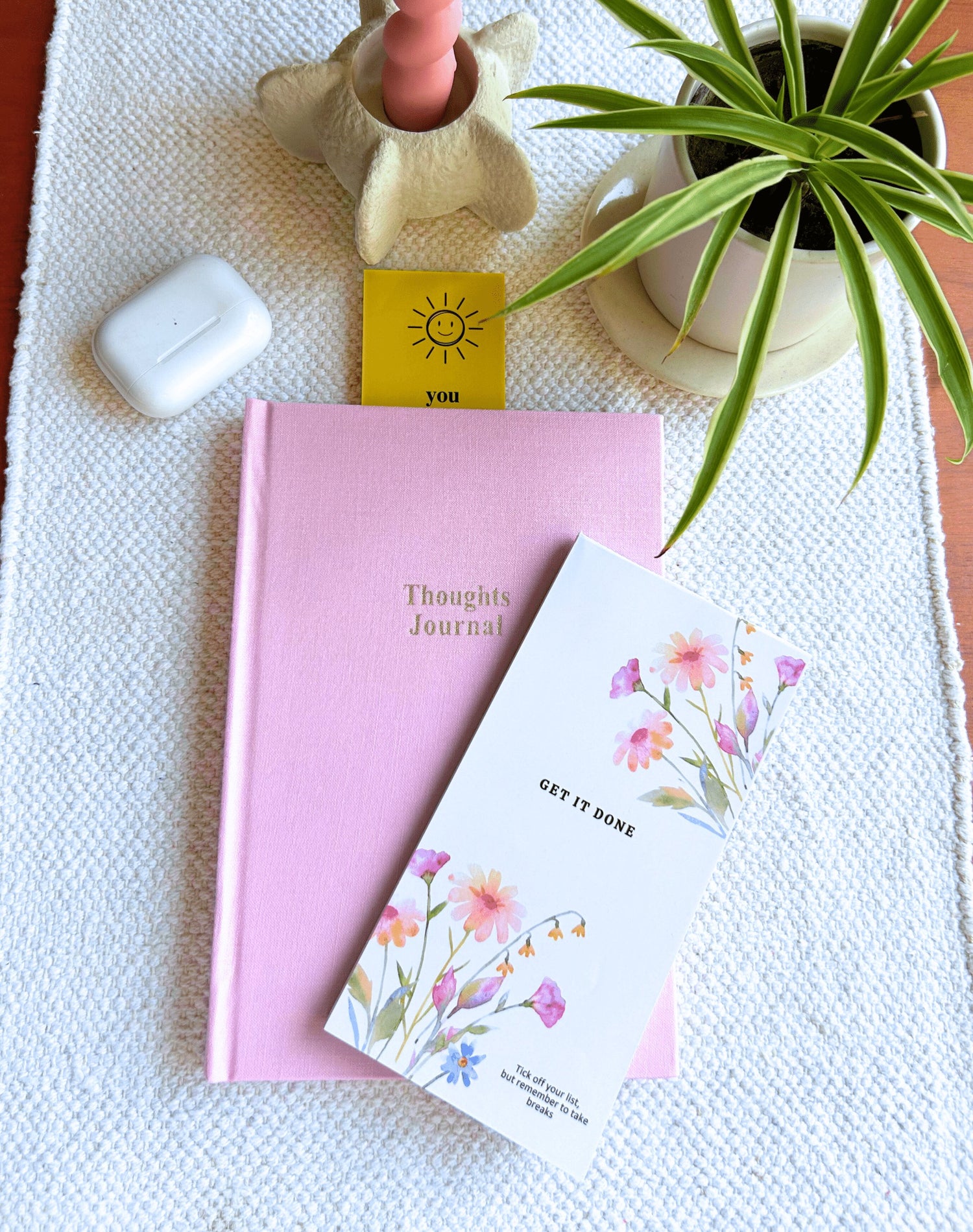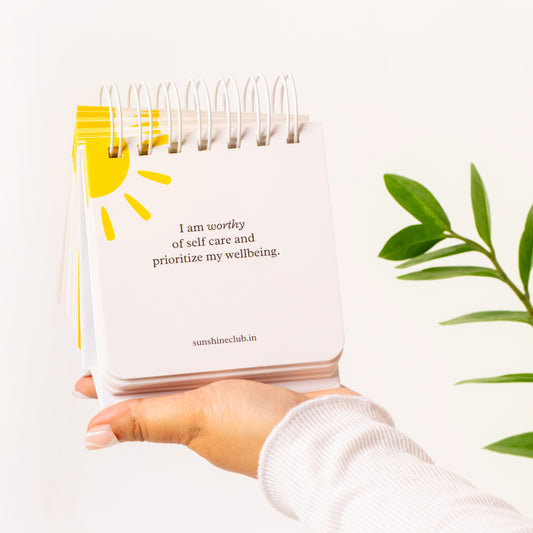
The Art of Practicing Gratitude: A Path to a Happier Life
Share
In the rush of everyday life, it’s easy to get caught up in what’s going wrong, what we don’t have, or what we still need to achieve. We often overlook the good that already exists in our lives. That’s where gratitude comes in—a practice that may seem simple, but has the power to transform our mindset and how we experience the world. Practicing gratitude is an art, one that invites us to shift our focus from scarcity to abundance, from what’s missing to what’s present.
But how do we actually cultivate this attitude of gratitude? How can we make it a regular part of our lives, and what are the benefits of doing so? Let’s dive into the art of practicing gratitude and explore how it can enhance both our mental well-being and our daily experience.
What Does It Mean to Practice Gratitude?
Gratitude is more than just saying "thank you." It’s a conscious decision to recognize and appreciate the good in our lives—both big and small. It’s about acknowledging the things we often take for granted: the people who love us, the food on our table, the sunshine on a clear day, or even the breath in our lungs.
To practice gratitude means to regularly reflect on the things you are thankful for. It’s about cultivating a mindset where you actively seek out and appreciate the positives, even in difficult situations. Rather than being a passive feeling that arises only when something particularly good happens, gratitude becomes a deliberate practice that can be woven into your everyday routine.
The Power of Gratitude: Why It Matters
Gratitude may sound simple, but its impact on mental and emotional well-being is profound. Research has shown that regularly practicing gratitude can lead to a wide range of benefits, from improved relationships to greater life satisfaction.
One of the most significant benefits of gratitude is its ability to shift our focus. When we practice gratitude, we train our minds to look for the good, which helps counterbalance our natural tendency to focus on what’s wrong or lacking. This shift in focus can reduce feelings of anxiety, stress, and even depression. In fact, studies have found that people who regularly practice gratitude tend to experience fewer negative emotions and greater happiness.
Gratitude also fosters resilience. Life is full of challenges, and no one is immune to difficult times. However, when we cultivate gratitude, we become more resilient in the face of adversity. Rather than being overwhelmed by what’s going wrong, gratitude reminds us that there is still good in our lives. This perspective helps us navigate challenges with greater calm and clarity, knowing that even in tough times, there are things to be thankful for.
Moreover, gratitude strengthens relationships. When we take the time to express appreciation for the people in our lives, it deepens our connections and fosters a sense of trust and warmth. Whether it’s thanking a friend for their support or acknowledging the kindness of a colleague, expressing gratitude helps create more positive and fulfilling relationships.
How to Incorporate Gratitude into Your Daily Life
Gratitude doesn’t have to be reserved for grand gestures or major life events. In fact, the most powerful way to practice gratitude is to make it a regular part of your daily routine. Here are some ways you can start incorporating gratitude into your life:
1. Start a Gratitude Journal
One of the most popular ways to practice gratitude is by keeping a gratitude journal. Each day, take a few minutes to write down three things you are grateful for. These can be anything—from a delicious meal you had, to a supportive friend, to simply having a roof over your head. Over time, this practice helps you develop the habit of focusing on the positives in your life.
2. Reflect Before Sleeping
At the end of each day, take a moment to reflect on what went well. It can be easy to fall into the habit of thinking about everything that didn’t get done or what didn’t go right, but instead, consciously shift your thoughts to what you appreciated about the day. Maybe it’s a moment of laughter, a compliment from a coworker, or simply getting through the day despite challenges, jot these down in your journal.
3. Express Your Gratitude to Others
Gratitude is not just an internal practice—it’s also about expressing appreciation to the people around you. Make it a point to thank those who have had a positive impact on your life. Whether it’s a quick text, a handwritten note, or simply telling someone in person, expressing gratitude strengthens relationships and spreads positivity.
4. Practice Mindfulness with Gratitude
Mindfulness and gratitude go hand in hand. When you’re practicing mindfulness, take the opportunity to be grateful for the present moment. Whether you’re savoring a cup of coffee, enjoying a walk in nature, or simply appreciating the warmth of your home, use mindfulness as a way to deepen your sense of gratitude for the here and now.
5. Reframe Challenges with Gratitude
Life’s challenges can sometimes obscure our ability to see the good. But even in difficult times, practicing gratitude can be incredibly powerful. When faced with a challenge, try to find something in the situation to be grateful for. Maybe it’s the lesson you’re learning, the strength you’re gaining, or the support you’re receiving from others. Reframing challenges through the lens of gratitude helps foster resilience and a more positive outlook.
The Ripple Effect of Gratitude
Practicing gratitude doesn’t just benefit you—it has a ripple effect on the world around you. When you practice gratitude, you’re not only improving your own mental health and well-being, but you’re also influencing the people in your life. Gratitude is contagious; when you express appreciation and adopt a grateful mindset, it inspires others to do the same.
This ripple effect extends to the energy you bring into the world. A person who regularly practices gratitude tends to be more positive, empathetic, and connected. This positivity not only enhances your relationships but also contributes to a greater sense of community and collective well-being.
Gratitude as a Way of Life
Gratitude is not just a practice; it’s a way of life. It’s about consciously choosing to focus on the good, no matter what’s happening around you. In a world that often pulls our attention toward the negative, gratitude serves as a gentle reminder that there is always something to be thankful for.
By incorporating gratitude into your daily life, you’ll begin to notice a profound shift in your mindset. Life’s challenges may not disappear, but your ability to navigate them with grace and resilience will improve. You’ll start to see the beauty in the small things, the joy in the ordinary, and the abundance that already exists in your life.
So, take a moment today to pause, reflect, and appreciate. The more you practice gratitude, the more you’ll discover that it truly is an art—one that brings more peace, happiness, and fulfillment into your life.








